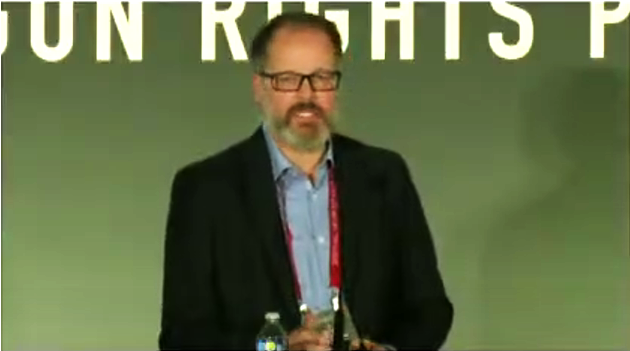
By Dave Workman
The average school attack has a duration of 3 to 5 minutes, while the average response time by law enforcement is 5 to 10 minutes, and schools can take specific actions to prevent tragedies, because an overwhelming majority of attackers share their intentions with others.
Those were just some of the revelations from Ryan Petty, newly-elected chairman of the Florida State Board of Education and the parent of a victim of the 2018 mass school shooting at Marjory Stoneman Douglas High School in Parkland, Florida. He is also a co-founder of the Walkup Foundation and was elected last Friday to the board of directors of the Citizens Committee for the Right to Keep and Bear Arms (CCRKBA).
His presentation came during the first hour of the 40th annual Gun Rights Policy Conference in Salt Lake City over the weekend. The event was co-hosted by the CCRKBA and Second Amendment Foundation.
Unlike others who have become gun prohibition advocates, Petty has become a school safety advocate with a powerful message.
Recognizing that many people believe the key to preventing school shootings is to repeal the Second Amendment and confiscate every gun in the U.S., Petty offers serious, practical solutions based on research and data.
He told the GRPC audience that 93 percent of school attacks have advance planning, and only about 5 percent are impulsive. He noted that 94 percent of attackers shared their intentions with others; an average of seven people had advanced knowledge of an attack.
Petty also revealed that the U.S. Secret Service and FBI have been using research to study school shootings since 2000, and that the Secret Service has actually been studying school shootings since Columbine.
Among the other details he shared:
- 69% of plots were observed by friends/classmates/peers
- 19% were reported to adults
- The typical planning period is between 8 and 12 weeks
- Incidents have an average duration of 3-5 minutes
- The typical response time by law enforcement is 5-10 minutes
- RARELY do responding police stop an attack
Explaining some disdain for the usual response from politicians and the political left that stricter gun controls are needed, Petty observed, “This scourge of school shootings and school attacks doesn’t stop when gun rights are violated, when our Second Amendment rights are taken, as they have been in Australia, as they are in China, as they are in Europe. In fact, the attacks continue. The weapon might be slightly different, but the outcome is the same… American families deserve solutions, not politics.”
Petty’s commonsense solution involves three basic components: Detect, Deter and Defend.
Detect: This includes threat assessment and management. Petty says every school needs a multidisciplinary school safety team, which must include law enforcement.
Deter: There must be discipline, with clear policies and it must be consistently enforced. There must be zero tolerance for offenders and parents “must be engaged early and often.”
Defend: Petty is clear about this. Armed people stop killers; immediate lethal interdiction saves lives. School Resource Officers with “armed guardians” are “force multipliers” and they can respond immediately.
This part of the strategy often creates the most controversy because it involves armed officers and armed volunteer staff and/or teachers.
Petty recalled the aftermath of the Parkland school shooting, where his daughter, Alaina, was killed.
“I saw this after Parkland,” he said.
His community “devolved” as gun control groups descended, and he observed, “If you think the students rising u and calling for gun control was anything organic, I’ve got some real estate in Florida I can sell you.”
He said gun control proponents, “without any sympathy or empathy” for what the families of the victims were going through, “contacted each of us and demanded that we advocate for gun control.”
“I had a school board member from the Broward County school district in my home telling me,” he said, “arguing with me just days after I’d lost my daughter that the gun was the issue. You know what she was hiding? Her incompetence. Her inattention to school safety.”
Voters in that district had approved an $800 million school bond called the “SMART” Bond. The “S” stood for security. But instead of investing in actual security measures, Petty said, the district bought laptops.
“It’s our duty to keep our kids and staff safe,” he said.
Schools must train with first responders, he stressed. In Florida, the strategy includes “hardening” facilities by locking doors and having single points of entry.
“And we defend…by allowing guns in these so-called ‘gun-free zones’.”
Workman is editor-in-chief at TheGunMag.com.